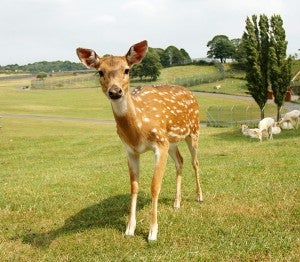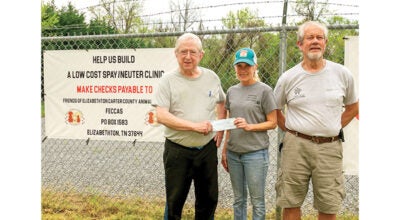Think you’ve found an abandoned fawn? Think again
Published 8:42 am Monday, June 29, 2015
The recent spike in calls to the Tennessee Wildlife Resources Agency about abandoned fawns may be more of a human misconception problem than a deer problem.
Over the last couple of weeks, the TWRA has seen an increase in calls about abandon fawns, Carter County wildlife officer Dennis Ward said, but most of the them were due to a misunderstanding on the part of the person calling.
“There is a lot of misconceptions when it comes to abandoned fawns,” he said.
Because fawns are much slower than their mothers and are more vulnerable to attacks from predators, a mother deer will leave her fawns hidden while she goes off to eat, returning every so often to clean and tend to the fawn.
“A mother deer can leave her fawn up eight to 10 hours — sometimes longer than that,” Ward said.
Typically, someone will be out and come across a fawn lying very still in high grass, absent from any other deer, and will assume, based on how humans raise their young, that the fawn has been abandoned, Ward said.
“We would never leave a baby lying by itself, so we transfer that idea to the deer and think something is wrong,” Ward said.
As of June 18, the Wynn Wood Wildlife Rehabilitation Center in Carter County, which has been in operation for roughly 17 years, had 10 fawns in its care, which is standard for this time of year, center owner Geri Wynn said. With the 10 baby deer, the center is halfway to its 20-fawn capacity, which is all it is allowed to take in per TWRA rules. Until recently, the Wynns were allowed to take in only 10 fawns, but that number was increased to 20 June 17, Wynn said.
According to Wynn, people usually can’t tell the difference between an abandoned fawn and a fawn the mother has left for a short a mount of time.
“Just because a fawn is found by itself does not mean that it has been abandoned,” Wynn said. “A mother deer may leave its fawn in what it thinks is a safe place, such as someone’s front yard, and go off and feed.”
There are some indicators that a fawn has been abandoned, Wynn said. If a fawn is dehydrated, is covered in flies and has feces under its tail, then the mother may not be taking care of it. If these signs are present, then it is best to contact a wildlife expert to have the animal properly examined before further action is taken.
Ward agreed that the aforementioned indicators are accurate, because a mother deer will keep her fawns clean, eliminating odor that may attract predators to their hiding spot. It is possible for something to happen to the mother, such as being struck by a car, but it is almost a nonoccurrence for a deer to just abandon its young, Ward said.
If someone comes across a fawn by itself, the No. 1 thing to do is leave it alone, Ward said. Anyone who has found a fawn and taken it away from its hiding spot should return it to that place. The old wives’ tale that a deer will not take care of its young if it smells a human scent is not true, Ward said.
“Old tales like that are good ways to teach kids to leave animals alone, but they are usually not true.” Ward said.
Wildlife officers have had to go out and recover two fawns that have been taken out of the wild this season, Ward said.
Taking a fawn from the wild is against Tennessee state law, Ward said. This year, several citations have been issued in Carter County to people who have taken fawns out of the wild, he said.




